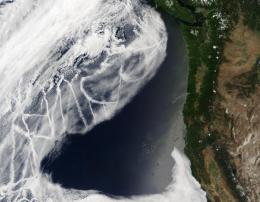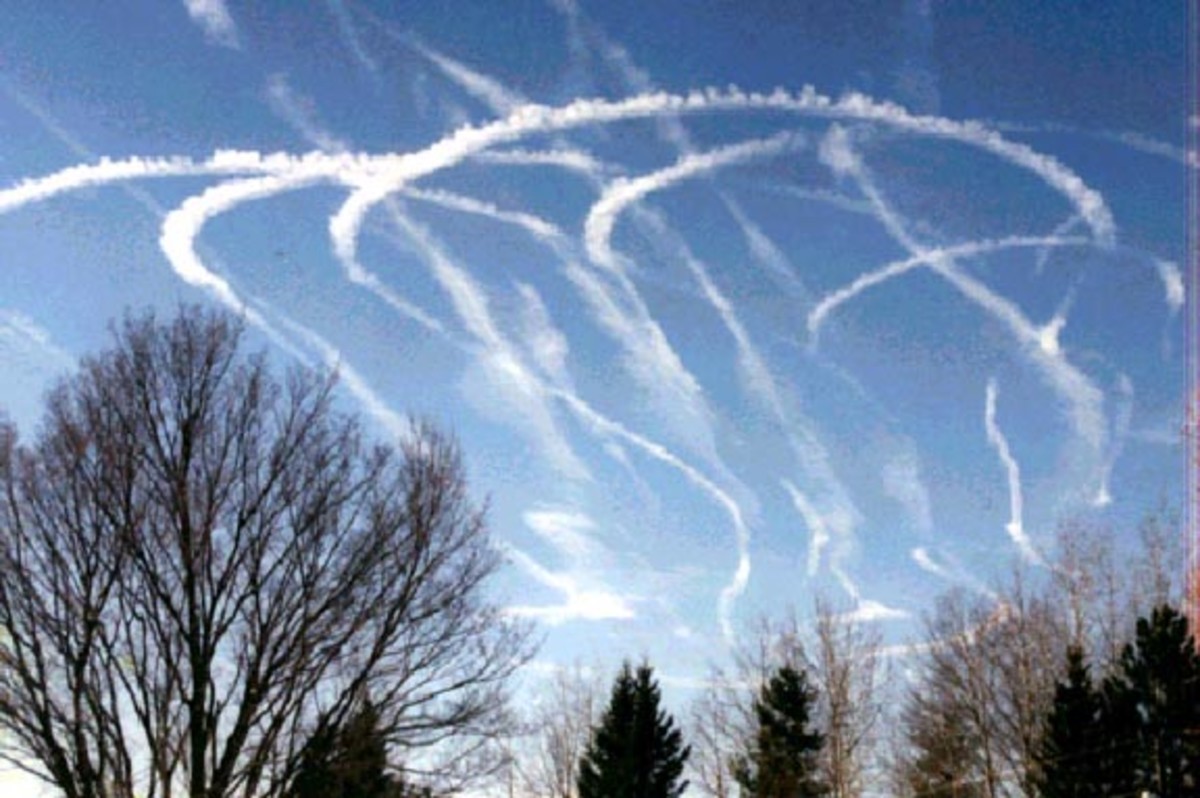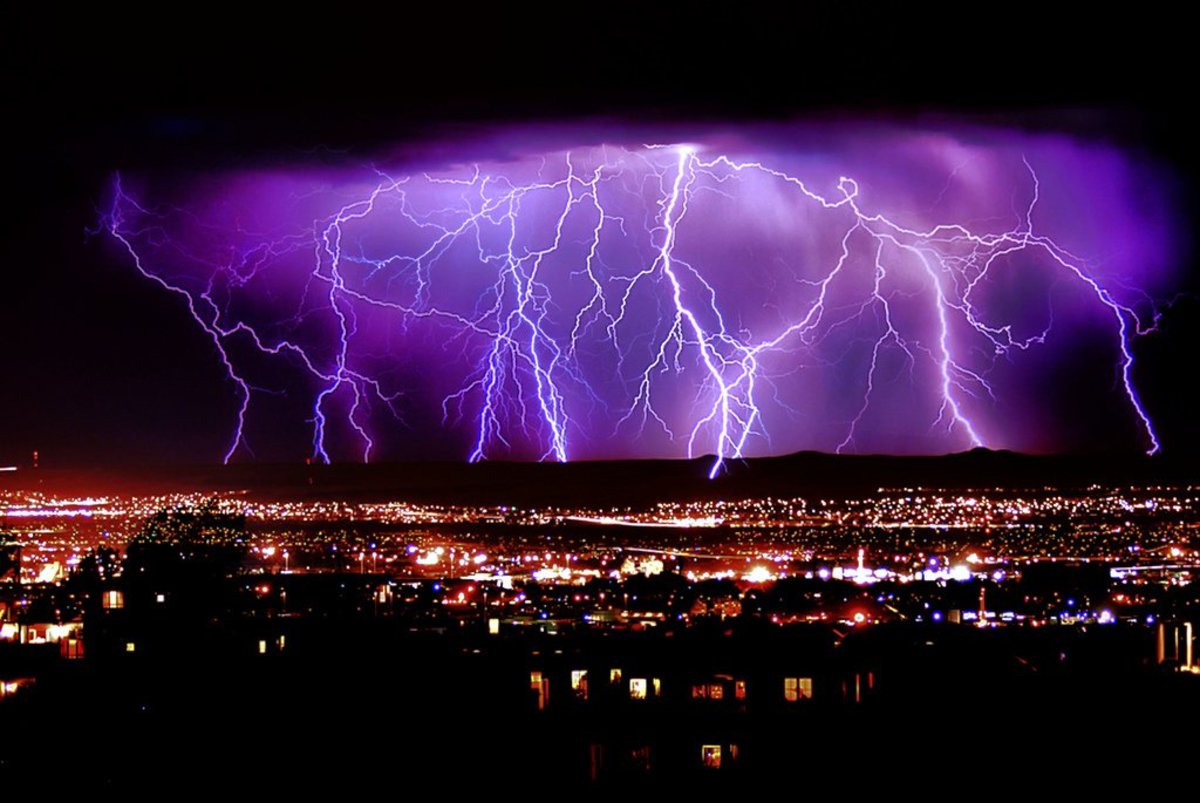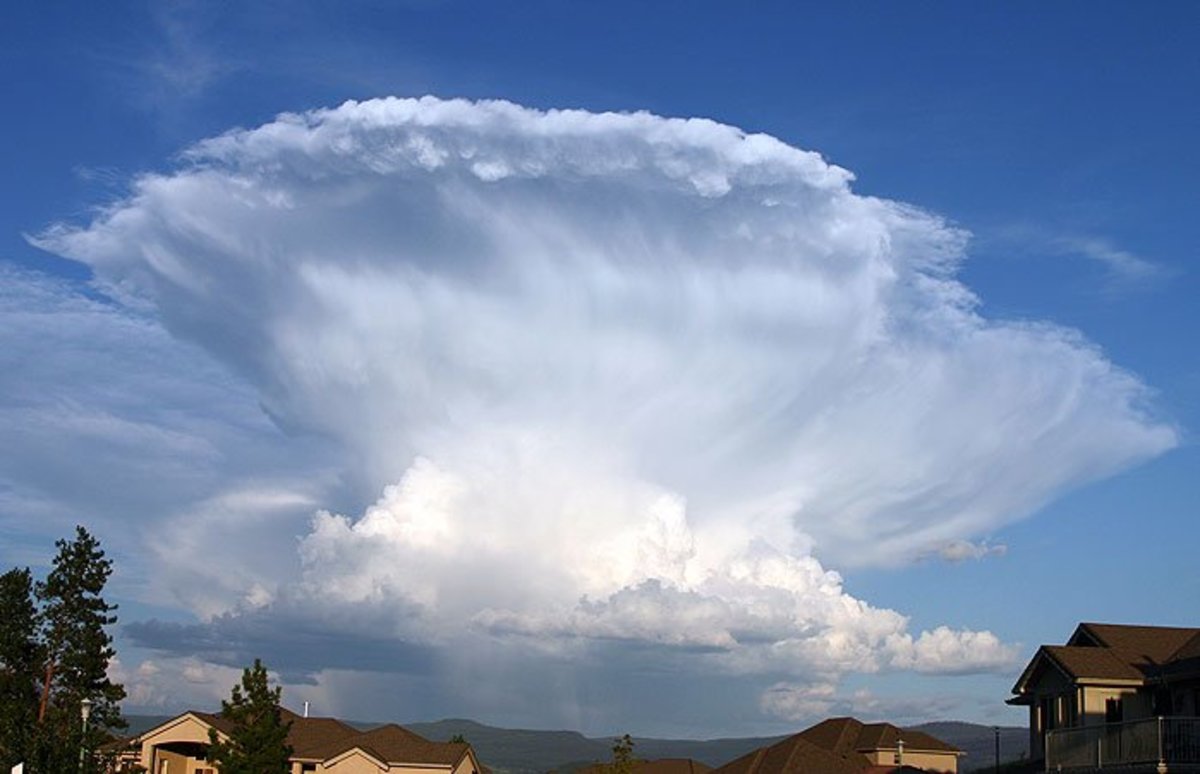The Clouds Above Us: Are We Taking Them For Granted?

Clouds have existed as long as humans have. We see them most everyday. As adults, we take for granted where clouds get their color, size and shape, or how the water vapor is visible to us to begin with. We are struck by their ubiquity. As children, we constantly ask the whys and hows about clouds, simultaneously gasping at the enormity of these interspacial bunnies or fire-breathing dragons as they float across the sky.
We know that clouds are condensed water vapor - a mass of liquid or frozen water that evaporated from the earth’s lakes, rivers and oceans. We know that clouds, in short, represent the rain cycle. But should we think much more about these billowing wonders of science?
The Importance of Clouds
Since clouds are formed from water (which comprises over 70% of the earth’s surface), they are inevitable. They can represent the delight of a summer’s rain ending with a rainbow (no pot of gold guaranteed), or they can represent the devastation caused by heavy rains and flooding. Metaphorically, this translates into good times and bad times and makes clouds great subject matter for songs and poetry. Life is partly sunny with a chance of rain!
Metaphors aside, all clouds do not have a silver lining. Since clouds form when high temperatures change water molecules from a liquid to a gas state, water molecules stay suspended in the air as gas and eventually attach themselves to small dust particles. Once these small dust particles join forces with clouds, they have the capacity to rain down on us when low temperatures condense them back to water form. That is, clouds harbor an enormous greenhouse effect and serve as hosts for air pollution. Recent studies have even shown that certain bacteria reside in clouds and have evolved to the point that they can actually use raindrops to disperse themselves. Since clouds are inevitable and they exist worldwide, we can run but we cannot hide from them.
As a means to disperse bacteria and pollutants on humanity, clouds take on a new and unexpected meaning. When you further consider that clouds are also used to predict weather patterns, you clearly see their potential to be used as a weapon of mass destruction.
Bunnies and dragons exit stage right. Fire-breathing dragon enter stage left.
Using Clouds to Predict Weather
For over ten years, NASA has used an instrument called the Multi-angle Imaging SpectroRadiometer (MISR) to calculate cloud height and motion from the south to north pole. As MISR orbits the earth via the satellite, cameras view clouds at numerous angles and collect atmospheric data. Originally an attempt to determine cloud positions, MISR found wind speed measurements so accurate that NASA learned they could improve both short and long-term weather predictions with MISR as well as use the radiometer to gather cloud intelligence.
Vertical lift caused by gravity waves in the atmosphere pushes clouds to even higher altitudes where they can play a role in the depletion of the ozone. With the use of Cloud-Aresol Lidar and Infared Pathfinder Satellite Obersvation (CALIPSO), scientists caught polar stratospheric clouds (PSCs) or nacreous clouds along the east coast of Greenland. What is startling about this cloud capture, is that scientists had never before observed clouds 30 kilometers (19 miles) high. Clouds at this elevation can only form if the jet stream is aligned with a large air pressure system over the poles. A rarely known event until then, CALIPSO uncovered a cloud cover with serious ramifications.

It has been established that clouds have more of a greenhouse effect than all gases combined. In February of 2000, the U.S. National Aeronautics and Space Administration (NASA) released initial data following a five-year study on aerosols and their impact on climate. Bear in mind the difference between weather and climate is TIME. Although NASA added that ten years worth of data was necessary to assess any accurate impact from chronic aerosol exposure, the 2000 results were staggering. Then ten years later, NASA published its first long-term study in the September, 2010 issue of Environmental Health Perspectives. What NASA undeniably demonstrated was that HIGH levels of air pollution known as PM25 (particulate matter 2.5 micrometers or less in diameter) existed in the atmosphere. Particles this size can bypass a human’s normal defenses and get deep into the lungs causing an estimated 60,000 deaths per year. Indeed, clouds bring us both good times and bad times.


Contrails or Billows
Anyone living along the coast of Southern California is familiar with the months of “May Gray” and “June Gloom.” The Rick Springfield song “It Never Rains in California” pays homage to this phenomenon where heavy clouds produce little rain, yet seem to intentionally prevent the sun from breaking through. Five or six years ago, scientists found these cloud systems contained formations called “actinoforms.” Actinoforms are collections of clouds up to 300 kilometers wide which form trains of clouds even longer. 300 kilometers is over 186 miles. That's 300,000 meters. That's enormous! Add the cars and caboose and you can see the capacity clouds have to hover over California harboring little nasties for two months straight while collecting even more particles or pollutants in the process.
The U.S. National Oceanic and Atmospheric Administration set out to determine the impact of seawater particles on clouds. They developed a working model and discovered that boat tracks visibly show aerosol particles in the atmosphere. (See the photograph - satellite images of a boat clearly showed aerosol particles leaving the boats exhaust and entering the atomosphere.)
Whatever the month from January to December, clouds form a train we need to get on board with the second we de-board our boats and planes. Clouds hold a lot more than metaphorical prose and give stark reality to the old adage "what comes around goes around". We need to be diligently conscious of our contribution to clouds on both personal and professional levels around the globe.
- States | About EPA | US EPA
Contact the Environmental Protection Agency
What You Can Do
Since aerosols have several origins, there is something each of us can do. Furthermore, anything which makes emissions has the potential to contaminate clouds and hence, our environment: chemical sprays, boats, cars, planes. While fermentation, volcanoes, and minerals all play a role, it is humanity that plays the largest one.
Things you can do:
- Get to know your government's Environmental Protection Agency (EPA) or equivalent. The U.S. EPA sets limits on air and water pollutants. Invididual states may have stronger restrictions than the federal law requires, but cannot have weaker requirements. Other countries have similar organizations worldwide.
- Report violations of air or water pollution to the EPA or its equivalent.
- Become familiar with products which are high in aerosols and change your buying habits. Eliminating aerosols may be impossible, but cutting down on them can have a significant impact.
- Support businesses which demonstrate tangible evidence of their commitment to protecting the environment. Avoid businesses which do not and let them know why.
- If you own a boat, plane, automobile or other source of transporation, get in-the-know about the emissions of your mode of transportation and take measures which will reduce or eliminate them.
- Get involved with local or state organizations which clean watersheds or wetlands.
- Teach your children about the longstanding implication of air and water pollution. Clouds are a perfect visual aide and have the potential to make a lasting impact.

- Cloud - Wikimedia Commons
Photgraphs of most cloud types. - Weather Photography
Photographic catalog of weather phenomena. - Gallery of Cloud Photography
- Clouds
Graphics, illustrations, and information provided royalty-free for non-profit educational use.
Seeing The Forest through the Clouds
We must thank the sun for the ability to see clouds. When condensation reaches a point that it cannot make rain, light becomes reflected and refracted. This is what makes clouds visible. But the sun has a potentially more powerful affect on clouds. Scientists in the United Kingdom are attempting to simulate cloud formation in order to study how they interact with cosmic rays from the sun. The project called Cosmics Leaving Outdoor Droplets (CLOUD), shows mixed results about the affect cosmic rays have on clouds and climate. While the debate is still going on about the effect of cosmic rays, let us not forget the implications of being able to "generate" artificial clouds.
Noctilucent Clouds and Aurora
Lagniappe: A Remedial Course in Clouds
The majority of clouds develop through a process called thermal convection. Convection means warm air rises and cold air sinks. Simply put, when humid or warm air is cooled, clouds form and then condense which means clouds can form during a front. Clouds further form when forced to move over a mountain. As they ascend, the air cools and once cooled to the saturation point, condensation occurs and the water vapor becomes visible. There is no known end to the ascension. High-level clouds ("cirr") are those which form above 20,000 feet or 6,000 meters. They are mainly ice crystals. Mid-level clouds ("alto") are those which appear above 6,500 feet. They, like low-level clouds ("nimbo") which appear below 6,500 feet, are water droplets.
Clouds fall into four main classifications using Latin root words to describe them as follows:
- Cirrus (which means curl of hair) - Cirrus Clouds are curly and featherlike. They are often the first to appear in a blue sky but are not predictors of rain or snow.
- Cumulus (which means heap) - Cumulus clouds look like cotton balls and are usually isolated in a deep blue sky. Often depicted as bunnies or puppy dogs by children, they have flat bottoms and lumpy tops because they are formed by thermal convection.
- Stratus (which means layer) - Stratus Clouds form a thin blanket or layer across the sky. They form very low on the horizon and at their lowest level are considered fog. They represent the initial stages of the condensation cycle.
- Nimbus (which means rain) - Nimbus clouds are dark and forboding. The are strong indicators of rain.
However, even when you know both cloud type and elevation, clouds still have a myriad of variations:
- Stratocumulus clouds are dark and grey, but puffy. They do not produce rain, but form after a rainstorm.
- Nimbostratus clouds are also dark and grey mid-level louds which mask the sun. They are associated with rain or snow.
- Cumulonimbus clouds are high-level clouds (ice crystals), but can also form low in the atmoshphere (water droplets). They are associated with thunder and lightning, rain, and tornadoes.
- Altostratus clouds are water and ice. They cover as much of the sky as you can see and during rainy periods, though they produce very little rain themselves.
- Cirrocumulus clouds are small white balls, either individual or in rows, that give a ripple like appearance.
- Cirrostratus clouds are very thin and nearly transparent. The moon or sun can be seen through them and they often signal rain.
- Altocumulus clouds are white and grey (or both). They are puffy and appear in long rows. Often confused with cirrocumulus clouds, they can be distinquished by their distance. The closer they are, the more likely to be altocumulus - the farther away, cirrocumulus.
Clouds can also be regional. For instance, nacreous clouds (also called mother-of-pearl clouds) are mostly seen in winter in high altitudes like Iceland, Alaska, Scandavida and Canada. They have been seen as far south as England, but are virtually extinct outside of a mountain range.








